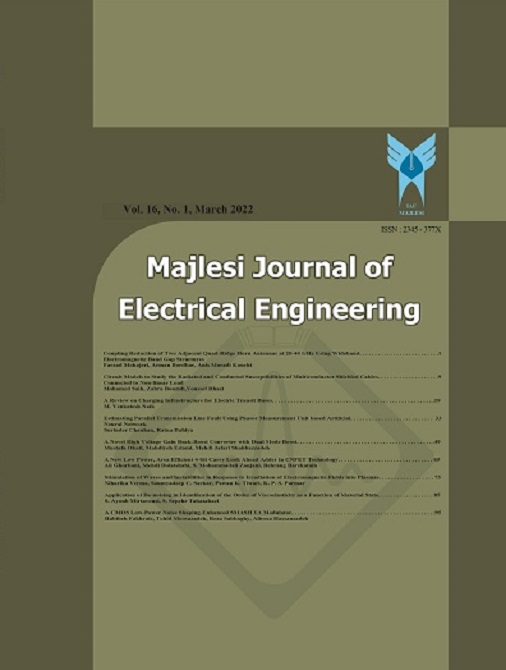[1] Roy, A., & Bandyopadhyay, S. (2019). “Wind Power Based Isolated Energy Systems”. Cham: Springer International Publishing.
[2] Salameh, Z. (2014). “Renewable energy system design”. Academic press.
[3] Borbely, A. M., & Kreider, J. F. (Eds.). (2001). “Distributed generation: the power paradigm for the new millennium”. CRC press.
[4] Stiebler, M. (2008). “Wind energy systems for electric power generation”. Springer Science & Business Media.
[5] Simoes, M. G., & Farret, F. A. (2007). “Alternative energy systems: design and analysis with induction generators” (Vol. 13). CRC press.
[6] Rathore, U. C., & Singh, S. (2014, December). “Power quality control of SEIG based isolated pico hydro power plant feeding non-linear load”. In 2014 IEEE 6th India International Conference on Power Electronics (IICPE) (pp. 1-5). IEEE.
[7] Bonert, R., & Rajakaruna, S. (1998). “Self-excited induction generator with excellent voltage and frequency control”. IEE Proceedings-Generation, Transmission and Distribution, 145(1), 33-39.
[8] Singh, B., Murthy, S. S., & Gupta, S. (2006). “Analysis and design of electronic load controller for self-excited induction generators”. IEEE transactions on energy conversion, 21(1), 285-293.
[9] Singh, B., Murthy, S. S., & Gupta, S. (2003, November). “An improved electronic load controller for self-excited induction generator in micro-hydel applications”. In IECON'03. 29th Annual Conference of the IEEE Industrial Electronics Society (IEEE Cat. No. 03CH37468) (Vol. 3, pp. 2741-2746). IEEE.
[10] Timorabadi, H. S. (2006, May). “Voltage source inverter for voltage and frequency control of a stand-alone self-excited induction generator”. In 2006 Canadian Conference on Electrical and Computer Engineering (pp. 2241-2244). IEEE.
[11] Guo, H., Crossley, P., & Terzija, V. (2013, June). “Impact of battery energy storage system on dynamic properties of isolated power systems”. In 2013 IEEE Grenoble Conference (pp. 1-6). IEEE.
[12] Narayanan, V., Kewat, S., & Singh, B. (2020). “Solar PV-BES based microgrid system with multifunctional VSC”. IEEE Transactions on Industry Applications, 56(3), 2957-2967.
[13] Andea, P., Mnerie, A. V., Solomonesc, F., Pop, O., & Cristian, D. (2010, May). “Conventional vs. alternative energy sources overview. Part II. European strategies”. In 2010 International Joint Conference on Computational Cybernetics and Technical Informatics (pp. 601-606). IEEE.
[14] Ibrahim, O., Yahaya, N. Z., Saad, N., & Umar, M. W. (2015, October). “Matlab/Simulink model of solar PV array with perturb and observe MPPT for maximising PV array efficiency”. In 2015 IEEE conference on energy conversion (CENCON) (pp. 254-258). IEEE.
[15] Kanjiya, P., Khadkikar, V., & El Moursi, M. S. (2015). “A novel type-1 frequency-locked loop for fast detection of frequency and phase with improved stability margins”. IEEE Transactions on Power Electronics, 31(3), 2550-2561.
[16] Busada, C. A., Jorge, S. G., Leon, A. E., & Solsona, J. A. (2011). “Current controller based on reduced order generalized integrators for distributed generation systems”. IEEE Transactions on Industrial Electronics, 59(7), 2898-2909.
[17] Esram, T., & Chapman, P. L. (2007). “Comparison of photovoltaic array maximum power point tracking techniques”. IEEE Transactions on energy conversion, 22(2), 439-449.
[18] Giri, A. K., Arya, S. R., & Maurya, R. (2018). “Compensation of power quality problems in wind-based renewable energy system for small consumer as isolated loads”. IEEE Transactions on Industrial Electronics, 66(11), 9023-9031.

